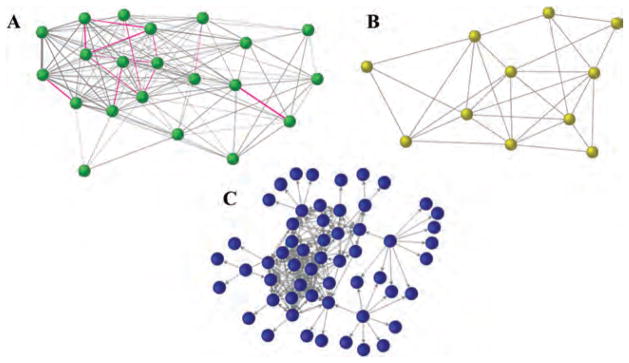Figure 2.

Social networks in three primate species. Networks are based on spatial proximity in (A) female rhesus macaques (n = 21), (B) coalitionary support in male chimpanzees (n = 10), and (C) named friendships in humans (n = 57). Nodes represent individuals; lines represent interactions between pairs of individuals. The thickness of the lines in (A) increase with the frequency of interaction. Arrows in (C) indicate whether named friendships were reciprocal. Individuals toward the center are more embedded in their social networks than those toward the periphery. Ties between closely related female rhesus macaques are highlighted in pink and demonstrate maternal kin bias (A). Social network position is heritable in humans26 and rhesus macaques,28 and has been associated with reproductive success in rhesus macaques28 and chimpanzees.167 Figure (A) was generated from the authors’ unpublished data, figures (B) and (C) were reproduced with permission from Refs. 167 and 26, respectively.
